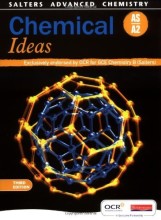Colour by Design - Reactions of arenes
6 important questions on Colour by Design - Reactions of arenes
What is the general equation for substitution reactions?
- R is the aryl group
- X is the leaving group
- E+ is the electrophile
Chlorine and bromine are weak electrophiles. How can their strength as an electrophile be increased?
Add AlCl3 for chlorine and FeBr3 for bromine (makes the molecules more polarised)
Why are ionic liquids useful for electrophilic substitution?
They act as a catalyst and a solvent in a green way i.e. reduce emissions because of lower volatility (everything happens in liquid state) + easy to recycle
- Higher grades + faster learning
- Never study anything twice
- 100% sure, 100% understanding
Name the elcetrophiles in nitration, sulfonation, chlorination and bromination - p.58 revision textbook.
nitration: NO2+
sulfonation: SO3
chlorination: Cl+
bromination: Br+
Explain the significance of the 'circle' drawn inside the benzene rings. Say where the electrons come from and how they are arranged.
It shows the cyclic delocalisation of electrons. One electron from each carbon above and below the ring.
Explain in terms of structure and bonding, why benzene undergoes mainly substitution reactions rather than addition reactions.
Substitution reactions keep the delocalisied electron structure = the stability retained in substitution. Addition product loses delocalisation.
The question on the page originate from the summary of the following study material:
- A unique study and practice tool
- Never study anything twice again
- Get the grades you hope for
- 100% sure, 100% understanding
































